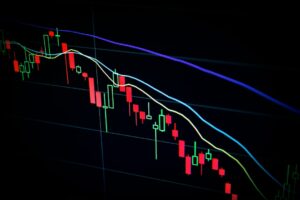Navigating the Forex Market: Best Currencies to Trade During Volatile Times
The forex market is known for its volatility, with currency prices constantly fluctuating in response to economic and political events. While volatility can offer great opportunities for profit, it can also lead to significant losses if not navigated carefully. During times of heightened volatility, it becomes crucial for traders to identify the best currencies to trade. In this article, we will explore some of the top currencies that tend to perform well during volatile periods.
1. US Dollar (USD):
The US dollar is considered a safe-haven currency, meaning that during times of market uncertainty, investors flock to it for stability. This is due to the perception that the US economy is strong and the US dollar is the world’s reserve currency. When geopolitical tensions rise or economic indicators signal a downturn, the demand for the US dollar increases, making it an attractive choice for traders seeking safety.
2. Swiss Franc (CHF):
Similar to the US dollar, the Swiss franc is also considered a safe-haven currency. Switzerland’s political neutrality, stable economy, and strong financial system contribute to the franc’s reputation as a safe investment during turbulent times. Traders often turn to the CHF when there is a high level of uncertainty in the market.
3. Japanese Yen (JPY):
The Japanese yen is another currency that tends to perform well during volatile periods. Japan has a large current account surplus and a low-interest-rate environment, making the yen attractive to investors seeking a safe haven. Additionally, the Bank of Japan has a history of intervening in the forex market to keep the yen’s value in check, which can lead to increased volatility.
4. Euro (EUR):
While the euro is not traditionally considered a safe-haven currency like the USD or CHF, it still has a significant role to play during volatile times. The eurozone is the world’s second-largest economy, and the euro is the second-most traded currency globally. As a result, the euro is often influenced by events in the global economy. During periods of volatility, the euro can experience significant price swings, presenting opportunities for traders.
5. British Pound (GBP):
The British pound is known for its volatility, particularly during times of uncertainty surrounding Brexit or other political developments. The pound’s value can fluctuate sharply based on the outcome of negotiations or political events. Traders who are skilled at navigating the pound’s volatility can potentially profit from its price movements.
6. Australian Dollar (AUD):
The Australian dollar is often regarded as a commodity currency due to Australia’s significant exports of natural resources, such as iron ore and coal. During times of increased market volatility, the Australian dollar can be influenced by commodity prices and risk sentiment. Traders who closely monitor commodity prices and global economic conditions can find opportunities in trading the AUD.
7. Canadian Dollar (CAD):
Similar to the Australian dollar, the Canadian dollar is also considered a commodity currency. Canada is a major exporter of oil, and fluctuations in oil prices can significantly impact the CAD. Traders who keep a close eye on oil prices and geopolitical events affecting oil-producing countries can take advantage of the CAD’s volatility.
8. New Zealand Dollar (NZD):
The New Zealand dollar is another commodity currency, often influenced by agricultural exports and global dairy prices. As with the AUD and CAD, traders who monitor commodity markets and global economic conditions can find opportunities in trading the NZD during volatile times.
It is important to note that trading during volatile times carries higher risks, and traders should exercise caution and employ risk management strategies. Volatility can lead to rapid price movements and increased market uncertainty, making it essential to have a well-defined trading plan and set realistic profit and loss targets.
In conclusion, navigating the forex market during volatile times requires careful consideration of the currencies that tend to perform well in such conditions. The USD, CHF, JPY, EUR, GBP, AUD, CAD, and NZD are among the currencies that traders often turn to during periods of heightened market volatility. However, it is crucial to conduct thorough analysis and stay updated on economic and political developments to make well-informed trading decisions.






